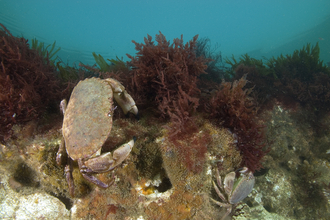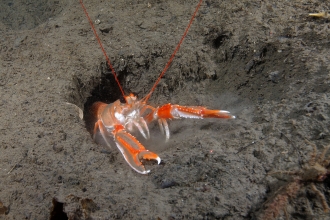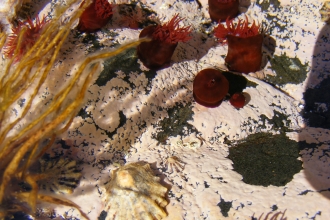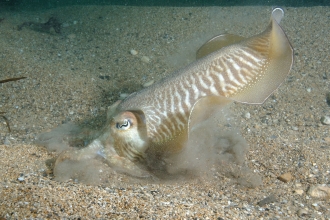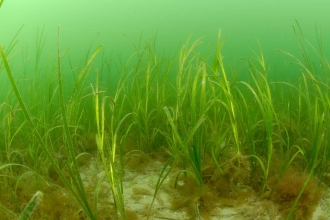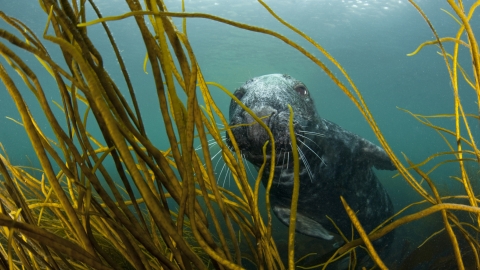
Grey seal in kelp forest ©Alexander Mustard/2020VISION
Kelp forests
What is it?
Kelp is the name given to several species of large brown seaweed. It has a similar structure to a plant, with a branching holdfast that roots it to the seabed, a thin hard stalk (called a stipe) and fronds that spread out like leaves.
Where conditions are right, kelp can form dense underwater forests, which are among the most productive and diverse ecosystems on the planet!
Kelp forests are one of the most productive habitats on the Earth. As well as supporting a wide variety of life, these habits also provide us with a range of services. Kelp forests alter the movement of water and can provide a buffer against storm surges by reducing wave energy. This helps reduce the removal of sediments from beaches and coastal erosion rates.
As climate change creates more severe weather, kelp forests are becoming more and more important.
Why is it like this?
Like plants, kelp depends on sunlight for survival. This means that they will only grow in shallow water where sunlight can reach the seabed - from the low tide mark down to 45m if the water is clear.
Kelp forests grow on hard, rocky surfaces where they can tangle their root-like holdfasts around the stone.
The leaf-like fronds contain air-filled bladders that help the kelp stalks float upright in the water, giving kelp beds the drifting appearance of an underwater forest.
Distribution in the UK
Kelp can be found all around the coasts of the UK, with forests developing in areas with a suitably rocky seabed.
The species of kelp varies depending on how exposed the coast is to wave action. Very exposed coasts have lots of winged kelp, less exposed areas hold tangle weed and cuvie, whilst sheltered coasts are dominated by sugar kelp.
The UK has the most diverse community of kelp species compared to any other country in Europe, with 7 out of the 14 species found across Europe.
What to look for
The holdfast at the kelp's base forms a network of nooks and crannies, providing a home for hundreds of individual animals. Worms and crustaceans burrow into the gaps, anemones and sea squirts cling to its surface, and small fish use it for shelter. Larger fish, like lumpsuckers, often lay their eggs amongst the holdfasts.
Smaller seaweeds cling to the rough surface of the stipe, sheltering other wildlife, whilst the fronds support colonial animals like sponges, sea mats and red seaweeds.
The thick, floating forest of kelp provides food and shelter for juvenile fish, which in turn attract larger fish and other predators like grey seals.
Conservation
Kelp only grows in the cool temperate and polar regions of the planet; global warming could change the distribution of kelp forests, or make the water too warm for them to survive. Losing our kelp forests would cause a ripple effect, impacting the many species that depend on them.
The Wildlife Trusts are calling for nature's recovery at sea. Find out more about how you can help and all the latest on the world beneath the waves by joining our marine mailing list.

